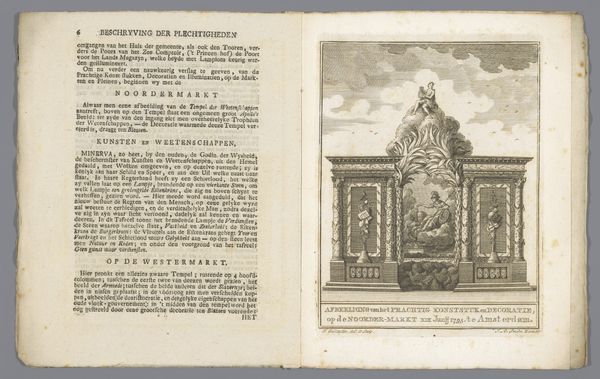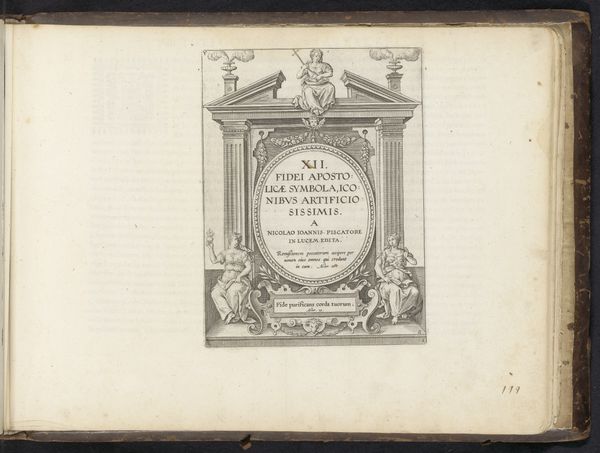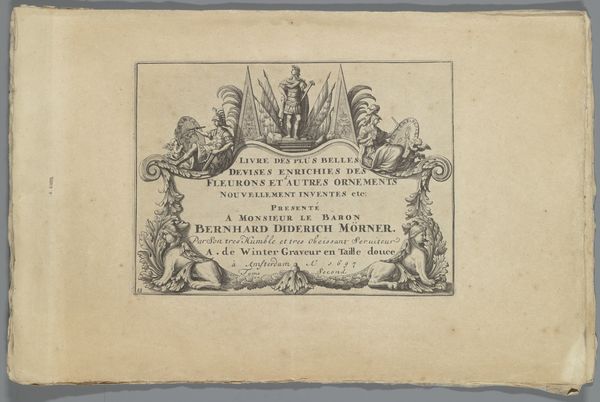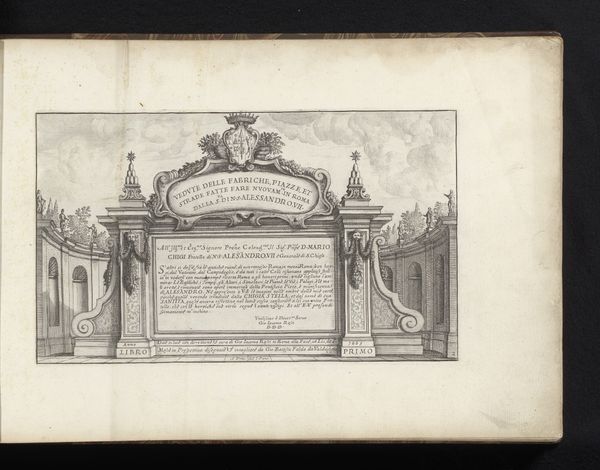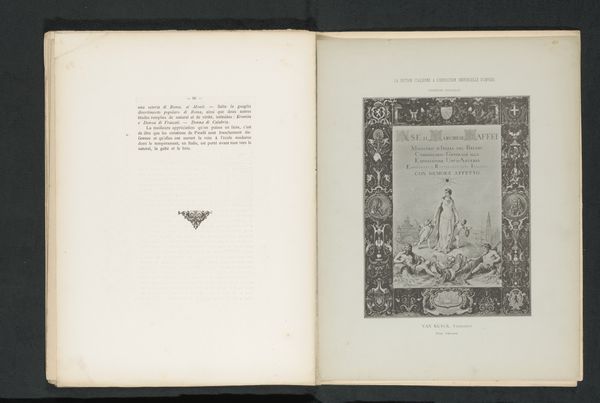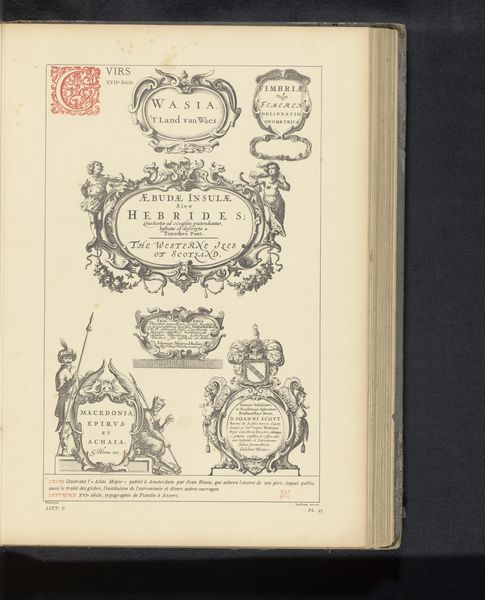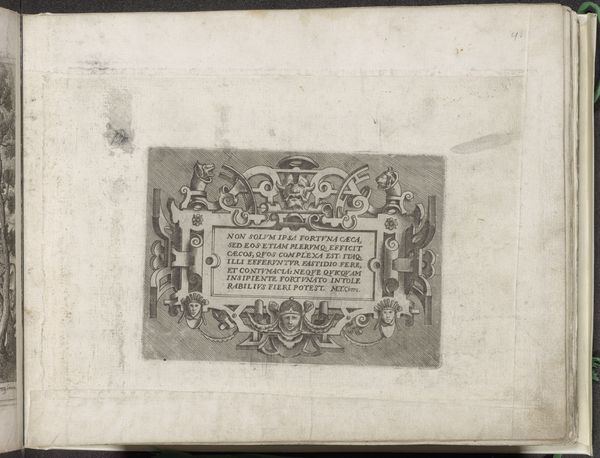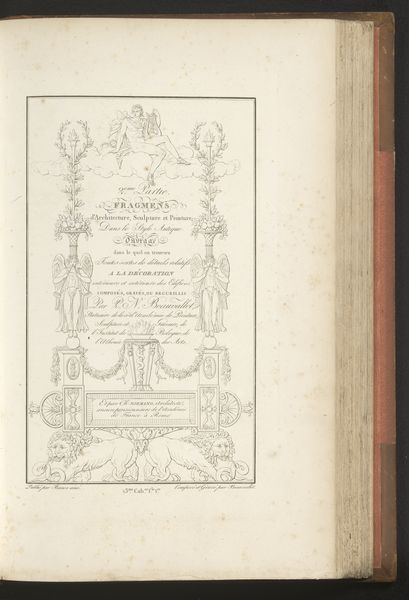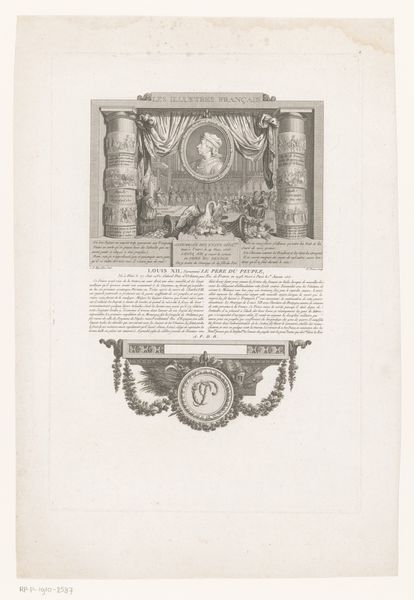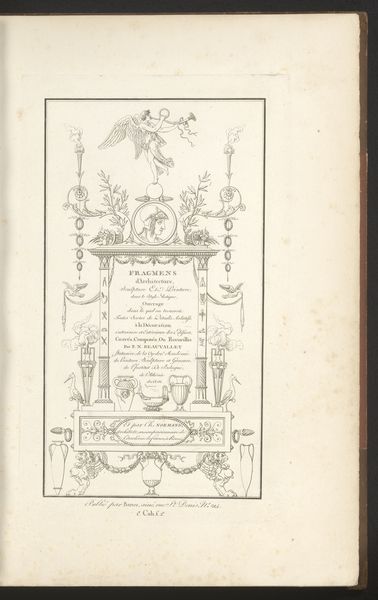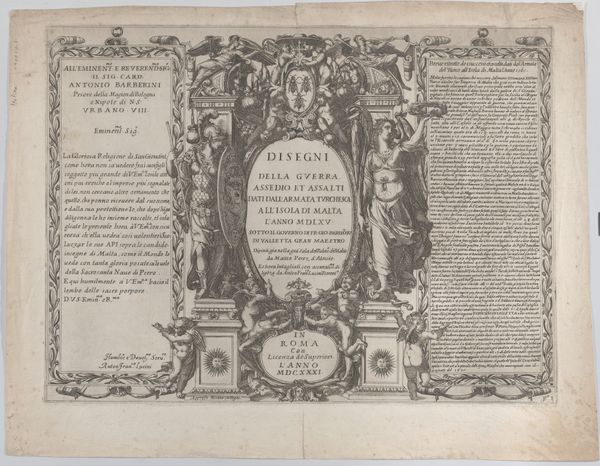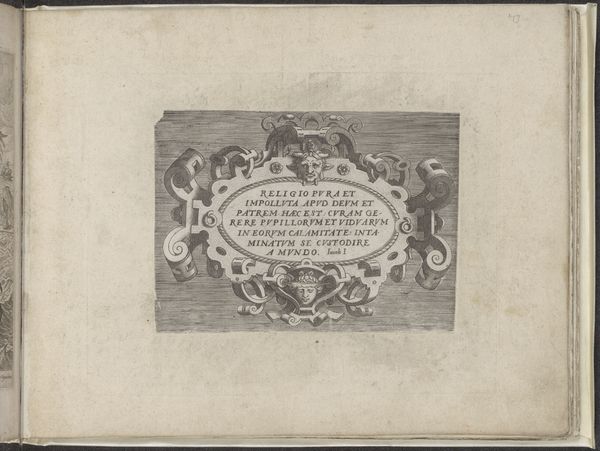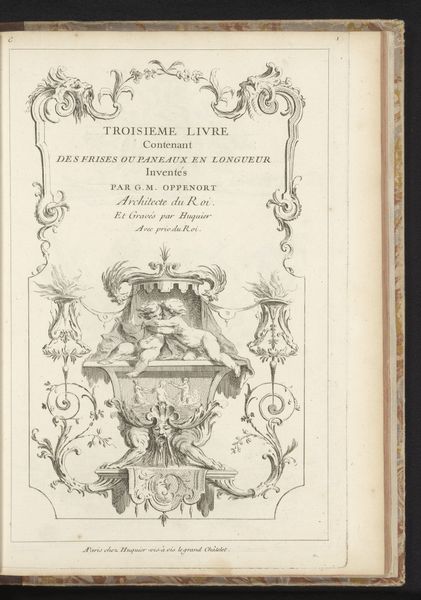
Koophandel en Zeevaart, decoratie op de Nieuwmarkt, 1795 1795
0:00
0:00
drawing, graphic-art, print, paper, engraving
#
drawing
#
graphic-art
#
neoclacissism
#
dutch-golden-age
# print
#
paper
#
engraving
Dimensions: height 175 mm, width 130 mm
Copyright: Rijks Museum: Open Domain
Editor: Here we have "Koophandel en Zeevaart, decoratie op de Nieuwmarkt, 1795" by Johan Christoffel Schultsz, housed in the Rijksmuseum. It’s an engraving on paper depicting a decorative structure, quite ornate, set up in a public square. I find the depiction of commerce so literally elevated to be quite fascinating, especially considering its purpose for a public celebration. What catches your eye in this piece? Curator: As a materialist, I’m particularly drawn to the context of production. This engraving isn't just a representation; it's a mass-produced object designed for wide circulation. It speaks to the material conditions and the labor involved in disseminating political ideas during a time of revolution. Consider the paper itself, the ink, the engraving process - each step a deliberate act contributing to the construction of revolutionary identity. Editor: So, you're less focused on the image itself and more on how it was made and distributed? Curator: Not exclusively, but the image is inherently linked to its materiality. The detailed rendering of the ship and allegorical figures speaks to a certain level of skill, but more importantly, it reflects the available technologies and the intended audience. Were these prints aimed at the elite, or a broader public eager to consume these images of revolutionary change? Furthermore, was this piece unique, or was it common in this period of revolutionary propaganda? Editor: That's a good point, understanding the print run and distribution would tell us a lot about its impact. I was stuck on interpreting the symbolism, but you’ve really shifted my perspective. Curator: Symbolism is important, but it’s crucial to understand who gets to interpret and control that symbolism, and how the very *process* of producing and consuming the image shapes its meaning. Considering that its materiality is what has preserved it into the modern day. Editor: I see what you mean. It’s a good reminder that art doesn't exist in a vacuum; it's deeply intertwined with its social and material context. Thinking about the labour of producing images adds another layer to my interpretation. Thanks for sharing. Curator: Indeed. And considering the cost, dissemination, and destruction or conservation of the piece itself are elements for critical examination.
Comments
No comments
Be the first to comment and join the conversation on the ultimate creative platform.
